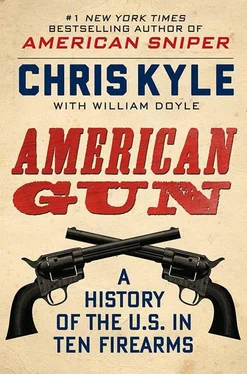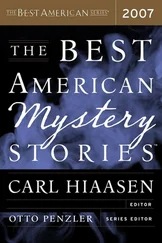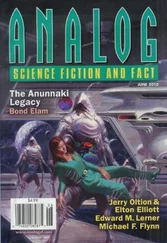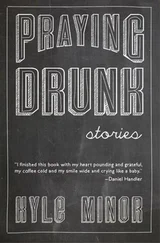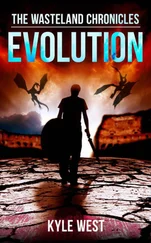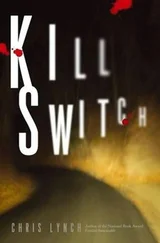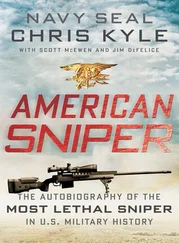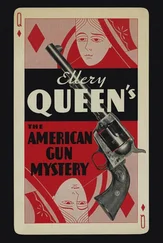The brigade was a one-off outfit, a hybrid of cavalry and infantry at a time when those two forces were very separate animals. Colonel Wilder was a bit of a different beast himself. Hailing from New York’s Catskill Mountains, he commanded a collection of infantry units totaling some fifteen hundred foot soldiers, along with a detachment of artillery. His first assignment was to run down a rebel cavalry unit that had made mincemeat of Rosecrans’ supply line. You don’t need to know much about combat to guess how that went; pretty much every horse I’ve seen is faster than any man I’ve met. Wilder came away from the assignment a wee bit frustrated.
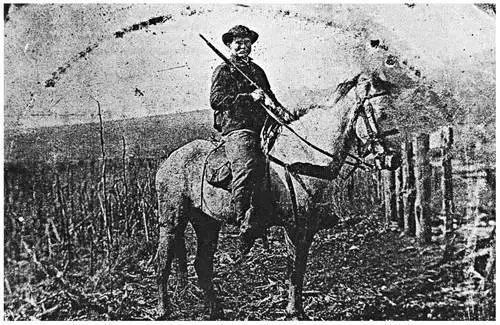
Possibly a member of Colonel Wilder’s “Lightning Brigade” of mounted infantry—armed with a Spencer rifle.
Library of Congress
But from that setback came a solution—he asked permission to mount his infantry. Wilder wasn’t transforming his brigade into horse soldiers. He wanted a force that could move at lightning speed, then dismount and fight. And when he said fight, he meant fight . Besides the repeaters, he armed his men with long-handled axes for hand-to-hand combat. Here was an officer who fully understood the phrase violence of action.
Colonel Wilder also appreciated the meaning of the word charge , which is what he did on June 24, 1863, when tasked to take Hoover’s Gap, a key pass Rosecrans needed to outmaneuver his enemy. Wilder’s men slammed through the gap like a bronc busting out of its gate. They routed the 1st Kentucky Cavalry, then pushed well ahead of the main body of infantry they were spearheading.
The Rebs counterattacked ferociously, sending two infantry brigades and artillery against the Northerners. Though badly outnumbered, Wilder’s men held their ground. The volume of fire poured out by the Spencers—nearly 142 rounds per man—was so large that the Confederates thought they were facing an entire army corps. The rebel lines collapsed into retreat.
“Hoover’s Gap was the first battle where the Spencer Repeating Rifle had ever been used,” Wilder later wrote, “and in my estimation they were better weapons than has yet taken their place, being strong and not easily injured by the rough usage of army movements, and carrying a projectile that disabled any man who was unlucky enough to be hit by it.” He added, “No line of men, who come within fifty yards of another armed with Spencer Repeating Rifles can either get away alive, or reach them with a charge, as in either case they are certain to be destroyed by the terrible fire poured into their ranks by cool men thus armed. My men feel as if it is impossible to be whipped, and the confidence inspired by these arms added to their terribly destructive capacity, fully quadruples the effectiveness of my command.”
One of Wilder’s soldiers wrote of the Spencer that it “never got out of repair. It would shoot a mile just as accurately as the finest rifle in the world. It was the easiest gun to handle in the manual of arms drill I have ever seen. It could be taken all to pieces to clean, and hence was little trouble to keep in order—quite an item to lazy soldiers.”
“Those Yankees have got rifles that won’t quit shootin’ and we can’t load fast enough to keep up,” said a Confederate soldier who was on the losing end of the Battle of Hoover’s Gap. After another Tennessee battle, a Confederate prisoner asked his captors, “What kind of Hell-fired guns have your men got?”
The performance of the Spencer Repeater that June day in Tennessee marked the true dawn of the multiple-shot infantry gun, an era that would dominate the battlefield of the twentieth and twenty-first centuries.
A week after Hoover’s Gap, North and South faced off in an epic battle destined to be remembered for centuries. It was the Battle of Gettysburg, and while the vast majority of guns fired there were rifle-muskets, breechloaders and repeaters appeared at critical moments to help tip the scales in favor of the North.
Fighting was reaching its climax on the third day of the battle, July 3, 1863, when Confederate General James Ewell Brown “Jeb” Stuart and his legendary cavalry force prepared to smash deep into the rear of the Union forces guarding Cemetery Ridge. Stuart’s maneuver was intended to support the Rebs’ frontal assault on the Ridge, flanking the Northerners and cutting their supply lines. If Stuart’s cavalry managed to penetrate the Union rear, there was a good chance that Union General George Meade would be forced to siphon off troops and leave the main force disastrously exposed to what is now known as Pickett’s Charge.
The only thing between Stuart and the vulnerable Union rear was a cavalry division commanded by General David McMurtrie Gregg. His forces included a brigade of cavalry temporarily attached to his command and led by the Union Army’s newest and youngest general, twenty-four-year-old George Armstrong Custer. Custer has gone down in history as a peacock of a leader, a commander who dressed so flamboyantly that one observer compared him to “a circus rider gone mad.” He’s also considered a ridiculously bold general, rash or daring depending on your point of view. But no matter how you look at it, he had courage and guts in spades.
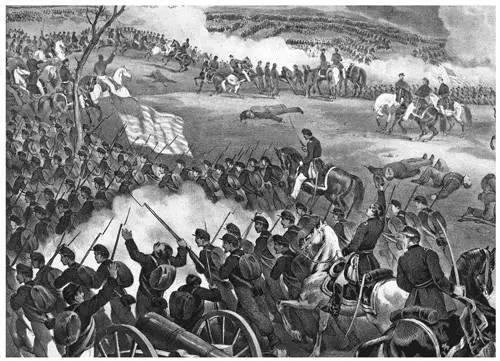
An artist’s depiction of the vast Gettysburg battle scene. Union troops armed with the newly adopted Spencer Repeaters held their own against the Rebel flank, helping keep the main force intact to repel Pickett’s Charge.
Library of Congress
Even more important than courage and guts on that day were the Spencer repeating rifles in the hands of the dismounted 5th and 6th Michigan Cavalry brigades that were part of Custer’s command. They bore the brunt of Stuart’s attack at Rummel Farm. Stuart’s idea was to plow through the skirmishers and plunge into the weak underbelly of the left side of the Union line. He might have done it, too, had the Michigan men not been equipped with Spencers. Their ferocious fire turned the Confederates back. Finally Stuart decided to send the 1st Virginia Cavalry down their necks. Exhausted by nearly two hours of fighting, the Blues buckled and were overwhelmed. The thin skirmish line broke.
Gregg ordered a counterattack to turn back the Rebel swarm. Shouting, “Come on, you Wolverines!,” Custer personally led the 7th Michigan Cavalry against the Rebs. Horse flew at horse, man at man. Bullets were followed by sabers, then knives, then fists. Men fought with every breath and heartbeat they had. Custer’s horse was shot out from under him. He grabbed another. As one historian noted, it was “the most dramatic, largest man-to-man, horse-to-horse, saber-to-saber galloping cavalry engagement ever fought in the Western Hemisphere and the final horse battle fought on a scale of this magnitude in the entire world.”
It was also the end of Stuart’s assault; his goal of outflanking the Union lines had failed. Pickett’s Charge collapsed later that afternoon.
Gettysburg, like many large battles, was a series of turning points, decisions, and movements made and not made. Any one of them might have changed the course of history. Take away the Union Spencers and maybe Jeb Stuart gets far enough to ruin the Yankee defense. Then maybe Pickett’s charge gets through…
Any way you think about it, those Spencer Repeaters proved that volume of fire was one important key to winning a battle that’s been called a turning point of the Civil War.
Читать дальше
